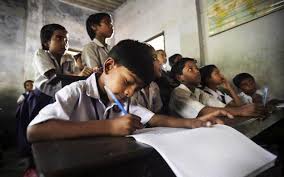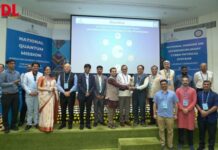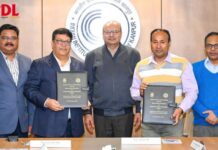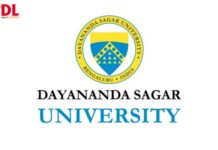
Education: an Indian depiction
In the past few years, India has made significant progress in getting children enrolled in schools. Of the 200 million odd children in the age group 6-14, about 93% are en olled in some form of formal or non-formal schooling. In spite of the rise in enrolment, dropout rates continue to be very high. The dropout rate in government schools between grades I to VIII is as high as 52%. Attendance rates are also fairly poor – recent statistics indicate the average student attendance rate to be about 75%.
As per the government’s own statistics, only 28% of the children who enroll in grade I pass Grade V with a reasonable level of education (more than 60% score in exams) while only 15% pass out of Grade VIII. A recent survey by an Indian NGO revealed that close to 35% of the children in the 7-14 age group could not read a simple paragraph and almost 60% of the children could not read a simple story.
Why this poor quality?
The major reasons for the poor quality of education are: (i) Overcrowded classrooms: Though the average Student Classroom Ratio (SCR) at the national level is around 40:1, it is as high as 84:1 in some states like Bihar. As per a recent assessment done at the national level, there is a gap of 998,000 classrooms as of September 2005. (ii) Lack of physical facilities: Of the 890,000 odd primary schools in the country, 16% are without drinking water and 51% are without a toilet. 7% of the schools do not even have a functional blackboard. (i i) Shortage of teachers: Data as of September 2005 indicates that in 18% of the government primary schools and 7% upper primary schools, the Pupil Teacher Ratio (PTR) is more than 70. As many as 14% government primary schools and 3% upper primary schools are single teacher schools. (iv) Untrained or inadequately trained teachers: 32% of the 2.7 million government primary teachers and 29% of the 1.4 million government upper primary teachers are without pre-service training. (v) Monotonous teaching learning process (vi) Lack of accountability in the
education system
Education Technologies (ET)
for improving quality Effective use of educational technologies can help to address some of the above issues – especially the issues related to teacher availability, competency and support,which are so central to interactive teaching and learning processes. Information and communication technologies (ICT) facilitate dialogue, interactivity, speed and access to information sharing at lower costs and are crucial for connecting people for a better world. Children of this generation are exposed to new technologies at an early stage. Therefore, the way they see, perceive and know is multidimensional: the way they process and receive knowledge too is varied and multi layered. Thus, there is an emerging need for multi channel learning approaches, with intelligent combinations of face-to-face instruction, technology-mediated applications, more systematically designed print materials and other non-traditional educational resources. Unfortunately, education technologies is often looked upon as only computers and the Internet, ignoring a host of other technologies that are available. Ideally, education technologies should include all components of the information technology used in the delivery of education. Radio is easily available across large parts of the country including remote areas and can be very effective in awareness building, information dissemination, teacher training and guiding classroom activities. Television also has substantial penetration in rural India including many schools; along with a Video Cassette Player, this can be a useful educational resource to a school. It helps in self-learning and in keeping children engaged. Satellite communications technology
offers the unique capability of being able to simultaneously reach out to very large numbers spread over large
distances even in the most remote corners of the country. Through audio and video interconnectivity it is now possible to recreate a virtual classroom scenario in a distant mode. Even a technology like the telephone, which now has an extensive coverage in rural areas, can be used for providing dial-in services and answering educational queries – such services are presently prevalent in urban areas during examination time. Access to computers and the Internet has brought about a knowledge revolution. These technologies are a great resource to the students as well as the teachers. With the introduction of Computer Aided Education, the teachers no longer have to depend on a single source of information, typically a textbook, but are exposed to opportunities to use a variety of information sources. Technologies like videoconferencing, dial-in telephone services, satellitebased communication and the Internet can also be of great help in training and capacity building of teachers; unlike the traditional cascade method of teacher training, there is no transmission loss in this case.
National level initiatives
The National Plan of Action (NPA) 2003 of the Government of India on Education For All (EFA) lays emphasis on an open learning system through a distance education mode and on computer education at elementary level. In India, the first school broadcast project was commissioned as early as 1937. There are experiences of fairly successful language learning programmes through radio in Rajasthan and Madhya Pradesh. The Indira Gandhi National Open University (IGNOU) also has an educational FM channel named Gyan Vani. Gyan Vani channels are operating at present in 17 cities and have plans to expand to 40 cities by 2007. IGNOU broadcasts Interactive Radio Counseling programmes every Sunday for one hour from 186 radio stations of All India Radio. The Center for Learning Resources also runs successful radio instruction programmes for schools in Maharashtra, Uttaranchal and Bihar. There has also been a fair amount of experimentation with distance learning through television and satellite communications. The Satellite Instruction Television Experiment (SITE), the Kheda Communication Project (KCP), the Jhabua Development Communication Project (JDCP), the Gramsat Programme (GP), the Training and Development Communication Channel (TDCC) and the INSAT system have been major efforts in this direction. In September 2004, the government launched ‘Edusat’ or he education satellite, to provide a boost to the distance mode of education. Designed and developed by the Indian Space Research Organisation, this is the first Indian satellite dedicated exclusively to the education sector. Networks based on Edusat are capable of facilitating live lectures/power point presentations with student interaction, web-based learning, interactive training, virtual laboratory, video conferencing, etc. The government has also launched a separate TV channel ‘Gyan Darshan’ exclusively for telecasting educational programmes. In a bid to further strengthen distance education, the open school system, until recently restricted to the National Institute of Open Schooling (NIOS), has now been strengthened through the establishment of State Open Schools. With respect to computer education at the elementary level, the government envisages a three-stage approach. he first stage would be computer literacy, the second stage would be computer-aided learning and the third stage would be computer based learning, according to the manifesto of the Indian Government. To provide for infrastructure and content development, financial provisions have been made under the Sarva Siksha Abhiyan (SSA) scheme whereby each district is provided with a minimum of INR 1.5 million per year for computer education. Some of the initial initiatives in Computer Aided Education taken up under SSA by states like Assam and Orissa has shown positive results in terms of teacher empowerment and improving learning levels among students. A major initiative in computer aided learning (CAL) named ‘Headstart’ was undertaken in Madhya Pradesh under the District Primary Education Programme (and continued under SSA) and has yielded encouraging results. Apart from government efforts, there has been a number of nongovernment and corporate initiatives in recent years with respect to computer education and computeraided learning. Most of the private schools in the urban areas today have computer literacy classes at the elementary level and some of them make effective use of computers and the Internet for learning.
Challenges
Notwithstanding the efforts described above, the challenges to the effective utilisation of education technologies are serious: (i) Availability of computer ardware- about 8% elementary schools have computers
(ii) Potentials of satellite technology not harnessed adequately (iii) Inadequacy of quality educational content (iv) Inadequate teacher capacity to transfer technology into educational gains Lack of a comprehensive policy on education technology at the national level has resulted in a piecemeal approach towards education technologies. The possibilities and benefits of the various technologies and the ways in which they can help in improving the quality of education have not been realised to the fullest. In the coming years, QUEST (see the box) will attempt to consolidate the learning outcomes of the numerous
experiments and pilots across the country and arrive at a shared understanding of the cost effectiveness and applicability of each technology. It would also
attempt to put in place a system of assessing and evaluating digital educational content and come up with guidelines on instructional design. It is hoped that the T4 and QUEST activities will continue to provide models that can be scaled
up through government funding along with contributing to the development of a comprehensive policy on education technology at the national level.
























